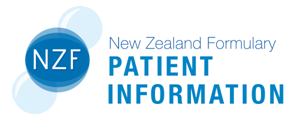What does it do?
Trimethoprim and sulfamethoxazole is an antibiotic used to treat and prevent bacterial infections.
Before you start
- Tell your doctor if you have an allergy to ‘sulfa’ medicines, if you have kidney, liver or blood problems, or if you have G6PD deficiency.
- Tell your doctor if you are pregnant, planning to become pregnant, or breastfeeding.
How should you take it?
Take trimethoprim and sulfamethoxazole regularly as directed. You can take it with or without food. Keep taking it until the course is finished, even if you start to feel better.
Tablet: Take with a glass of water.
Liquid: Measure carefully with an oral syringe or measuring spoon. Shake the bottle well before measuring each dose.
What if you forget a dose?
Take the missed dose as soon as possible and continue as directed.
Can you take other medicines?
Some medicines available without a prescription may react with trimethoprim and sulfamethoxazole including:
- potassium supplements (e.g. Span K®)
Tell your pharmacist or doctor about all medicines or treatments that you may be taking, including vitamins, herbal products or recreational drugs.
What side effects might you notice?
| Side Effects | Recommended action |
|---|---|
|
Skin rash, skin peeling or blisters |
Stop taking and see your doctor immediately |
|
Severe headache, stiff neck, confusion, eyes sensitive to light Reduced number of blood cells that fight infections or help your blood to clot - symptoms include: fever, chills, sore throat or generally feeling unwell, or easy or unusual bruising or bleeding Symptoms of liver problems including: yellow skin or eyes, itching, dark urine, pale bowel motions, abdominal pain Severe stomach pain, nausea |
Tell your doctor immediately |
|
Changes in heartbeat, muscle cramps or weakness |
Tell your doctor |
|
Stomach upset |
Tell your doctor if troublesome |
If you notice any other effects, discuss them with your doctor or pharmacist.
This leaflet contains important, but not all, information about this medicine.
Prepared by the MyMedicines Committee at Christchurch Hospital, Te Whatu Ora - Waitaha, New Zealand. March 2023
For more general information about this sheet and its contents, see: What does a My Medicines sheet cover?
Te Reo Māori
Te Reo Māori information sheets supported by Health Quality and Safety Commission New Zealand
Web links for this sheet in different formats
Click on buttons to copy web addresses for this leaflet:
If your browser does not automatically copy these links use its copy command instead.
About My Medicines
My Medicines Patient Information Leaflets (PILs) contain important, but not all, information about the medicines they describe.
For more information about the sheets, see: What does a My Medicines sheet cover?
My Medicines is developed by a team at Te Whatu Ora – Waitaha. Our team is made up of doctors, pharmacists, and a non-medical person to help us keep to plain language. We also discuss our information with specialist health professionals or groups when needed

